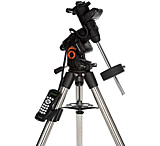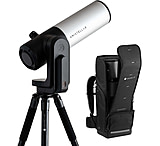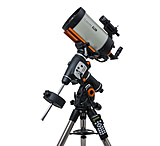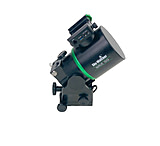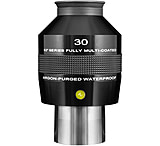Optimal Telescope Observation Locations
Observe the stars away from buildings, pavement, or large objects that absorb heat by day and release it at night. When these objects release heat at night, they create air currents (heat mirages) that degrade the image quality of your telescope. This is why observing from a terrace or top of a building is not a good idea. The best locations are open, grass-covered areas.![]()
Window Telescope Observing: Tips and Considerations
For a similar reason, observing through an open window is also a bad idea, especially if there is a pronounced difference between the air temperature in your house and the outdoor temperature. Since air always flows from a region of warmer temperature to an area of cooler temperature, you instantly create an air current when you open the window that seriously degrades the image.
The Importance of Closing Windows for Observation
If you must observe through a window during cold weather, leave the window closed. While this helps, you should be aware that the window glass is now acting as a lens in your optical system. Since the window acts as a lens, you will also discover that the best image quality will be obtained by aiming the scope directly through the window rather than at an angle. Pointing the scope up or down, rather than straight through the window, will produce serious optical distortion. Your optical system is only as good as its weakest link, which is now the window.
Observing From a Deck: Challenges and Alternatives
For the above reasons, observing from a deck is also not recommended. Not only does such a site put you too close to a building, but it also provides a less-than-stable observing platform. Every step you or someone takes produces a vibration in the eyepiece of your telescope, altering your image and putting you off course. This is worsened if you are operating at a high magnification, potentially ruining your shot. A telescope should be on stable ground for the best results.
Dark-Adapted Eyes: Enhancing Visibility of Faint Objects
Allow your eyes to become dark-adapted before trying to observe faint deep-sky objects. The best way to do this is to go outside and avoid fluorescent and bright lights until your eyes adjust. This takes time - typically 30 minutes under truly dark conditions. Unfortunately, it only takes seconds to ruin your dark-adapted eyes by looking into a bright light. To avoid this, you can buy a flashlight with a red lens or make your own by coating the lens with several layers of red nail polish. Since red light is easier on dark-adapted eyes, astronomers use red light to work around a telescope or read star maps. This allows them to still get the information they need and stay safe.
Averted Vision Technique: Maximizing Observational Success
Use what astronomers call "averted vision." Simply put, this means looking out of the corner of your eye (where your eye is more light-sensitive) rather than the center of your eye. In other words, don't stare directly at a faint object when trying to see it - glance at it from the side of your eye. It can mean distinguishing between seeing a complex entity and not seeing it.
Aligning Your Finder Scope
The finder scope is the little spotting scope on top of the main telescope, and it helps you center objects in your telescope. Ensure your finder scope is aligned correctly before leaving your telescope under the night sky. For more information on how to do this, check out our Telescope FAQs guide that goes more in depth into these concepts.
Starting with the Low-Power Eyepiece
Always start observing with the low-power eyepiece. This is the eyepiece marked with the most significant number, not the smallest. You will use your low and medium-power eyepieces much more than your highest-power eyepiece, as it is much easier to find an object at low power. Additionally, the image is brighter and sharper, so you can adjust the angle of your telescope to focus on specific areas easily. Then, you can switch to a high-power eyepiece once you have settled on an object to view.
Controlling Magnification: Avoiding Common Mistakes
Keep the magnification down. Too much magnification is the single biggest beginner mistake with a telescope. Too much magnification yields a fuzzy, dark image. There are many variables involved as to how much magnification to use, but when you begin to lose image detail or when images are not as satisfying to your eye, back off on magnification. Be especially careful when using Barlow lenses - it's very easy to overdo magnification when using this accessory.
Beginner-Friendly Objects: Exploring the Moon and Bright Planets
Begin your observation with an accessible object such as the moon or a bright planet - basically things that are easy to see and find. Trying to find faint objects such as galaxies and nebulae takes practice, as it takes a lot of technique to perfectly align your optic to see them. Go slowly. As you gain experience and confidence, move on to more challenging objects.
Using Alignment Stars: Improving GOTO Model Accuracy
If you have a GOTO model, use alignment stars widely separated in different areas of the sky and lower to the horizon. This gives the computer a better fix on your location than when using alignment stars that are close together and overhead. It doesn't hurt to learn the names of a few brighter stars, either, as an accuracy check for your computer system.
Realistic Expectations: Understanding Your Telescope’s Limitations
Keep your expectations reasonable. Compared to an observatory telescope, a backyard telescope is minuscule. It will never deliver the image quality or detail you see in magazines or television. Nor is your eye a camera - it cannot collect light over a long period like a camera and produce the beautiful color images you see in photographs. Those are done with filters and computer enhancement.
The Joy of Backyard Astronomy: Combining Experience and Exploration
On the other hand, your telescope is delivering an image directly to you and you alone. Astronomy is now your voyage of discovery into the depths of the universe, and your telescope is your spacecraft. Even a small telescope or binocular will give you a glimpse deep into the depths of interstellar space, but, in the end, it is the experience as much as it is the view. The glory is that we can do it from our backyard. Enjoy.





